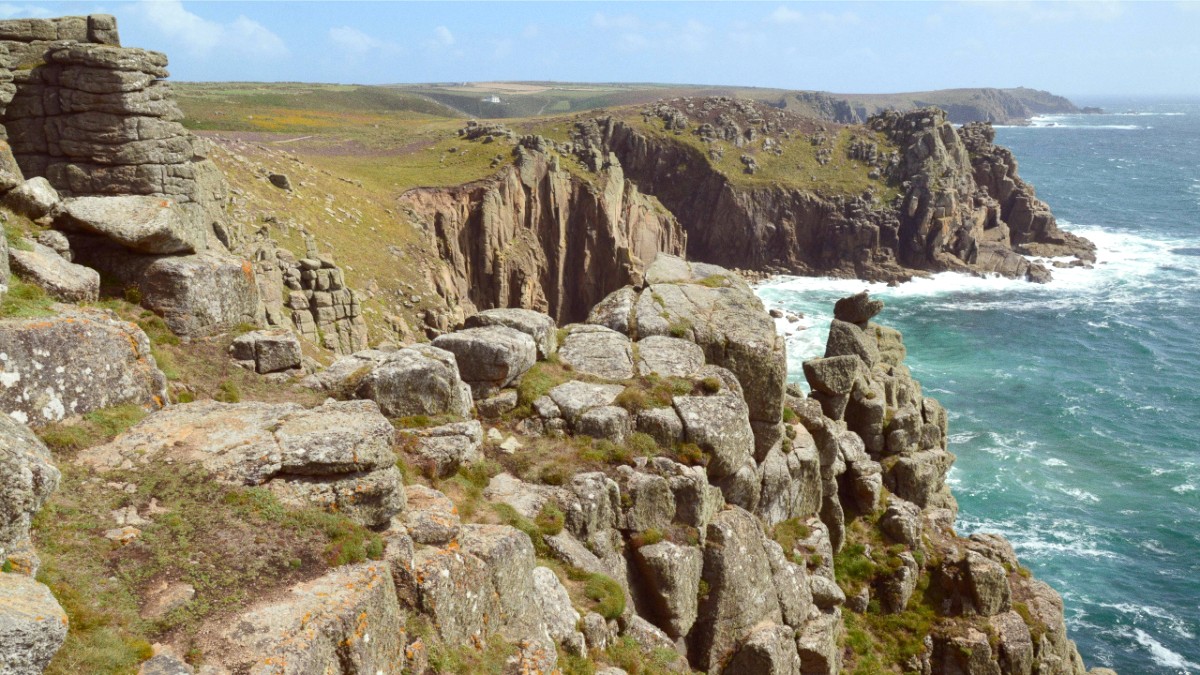
England, UK
The Isles of Scilly promise a distinct island experience. They lack grand bustling cities or loud tourist attractions. Instead, they feature natural splendor, a rich maritime history, and a welcoming community. People find peace here, connecting with the environment and the unhurried rhythm of island life. Plan your journey carefully, and the Isles of Scilly reveal a quiet charm found in few other places.
Picture a collection of islands kissed by the Gulf Stream, where palm trees sway gently and exotic plants flourish in a mild climate. Imagine stepping onto sands as white as the Caribbean, with water so clear you see the seabed. This is not a distant tropical paradise, but the Isles of Scilly. Here, the everyday rush fades, replaced by the rhythm of the tides and the gentle whisper of the wind. A visit to these islands brings a true escape, a place where natural beauty and a relaxed atmosphere combine for an unforgettable experience.
The islands feature more than just pretty views; they create an experience. You explore a rich history, discover unique wildlife, and meet friendly locals. Every island has its own character, from the main hub of St Mary’s to the wild beauty of Bryher. You will find activities for every interest, whether outdoor adventure, peaceful relaxation, or a deep dive into local culture. This guide helps you unlock the best of the Isles of Scilly, making your trip meet all your travel desires.
The Isles of Scilly comprise an archipelago of more than 140 islands and islets, positioned in the Atlantic Ocean southwest of Land's End, Cornwall. Only five of these islands are inhabited: St Mary's, Tresco, St Martin's, Bryher, and St Agnes. St Mary's is the largest and most populated island, serving as the main hub for arrivals and departures. Hugh Town, on St Mary's, acts as the administrative and commercial center. The islands spread across roughly 16 square kilometers of land, but their coastline extends much further, with countless bays, coves, and rugged headlands.
Despite their small size, the islands feature diverse terrains. St Mary's has rolling hills, sheltered beaches, and the more developed area of Hugh Town. Tresco boasts manicured gardens, serene beaches, and quiet paths. Bryher presents a wild, untamed west coast, with a calm, inviting east coast. St Martin's is known for its stunning white sand beaches and clear waters. St Agnes, the most remote, has a rugged, isolated feel, linked to the smaller island of Gugh by a sandbar at low tide. This variety within a small area means every day brings a new landscape to discover.
Largest, most populated, main hub with Hugh Town.
Home to Abbey Garden, serene beaches.
Stunning white sand beaches, clear waters.
Wild west coast, calm east coast.
Remote, rugged, linked to Gugh by sandbar.
The islands' geography defines much of their unique character. They rise from the ocean as granite outcrops, shaped over millennia by wind and waves. This geological foundation gives them a distinctive look, with rugged cliffs contrasting with low-lying sandy areas. The clear, shallow waters between the islands form a mosaic of blues and greens, making inter-island boat trips a visual delight. The Gulf Stream’s influence gives the islands a milder climate than mainland Britain, allowing sub-tropical plants to flourish, specifically in sheltered gardens like Tresco Abbey Garden. This unique combination of geology, ocean currents, and isolation creates a distinct ecosystem and landscape.
The Gulf Stream’s influence gives the islands a milder climate than mainland Britain, allowing sub-tropical plants to thrive, specifically in sheltered gardens like Tresco Abbey Garden. This unique combination of geology, ocean currents, and isolation creates a distinct ecosystem and landscape.
The clear, shallow waters between the islands form a mosaic of blues and greens, making inter-island boat trips a visual delight. Their coastline extends much further than their land mass, with countless bays, coves, and rugged headlands for exploration.
Image: Isles of Scilly Aerial View
The Isles of Scilly hold a history spanning thousands of years, with evidence of human settlement dating back to the Bronze Age. Ancient burial chambers, standing stones, and settlement ruins dot the landscape, offering glimpses into a distant past. These early inhabitants lived off the sea and the land, leaving behind a legacy visible across the islands. Their presence highlights the islands’ enduring appeal as a place to live, despite their isolation. Visitors find many opportunities to explore these ancient sites, connecting with the islands' deep historical roots.
The islands’ history also includes periods of private ownership and the development of unique industries. The Dorrien-Smith family leased the islands from the Crown in the 19th century, leading to agricultural development, notably the growing of early flowers for market. This tradition continues today, with flowers as one of the islands' iconic exports. This blend of ancient history, maritime tales, military past, and agricultural heritage creates a compelling narrative for the Isles of Scilly, inviting exploration and discovery.
Explore Bronze Age burial chambers and settlement ruins, vestiges of early island life.
Discover tales of shipwrecks and resilience, shaped by the islands' strategic sea position.
Visit Star Castle and other forts, monuments to centuries of military significance.
The maritime history of the Isles of Scilly shapes much of its story. Their position at the entrance to the English Channel made them a strategic point for trade and defense. This location also made them a treacherous hazard for shipping, leading to thousands of shipwrecks around their rocky shores. These wrecks narrate adventure, tragedy, and resilience, forming a rich underwater heritage. Museums and local lore preserve these stories, highlighting the islands’ close relationship with the sea. Many islanders today trace their lineage to shipwreck survivors or those involved in salvage operations.